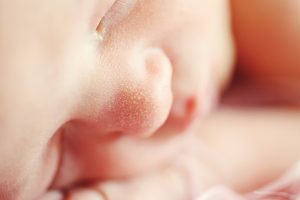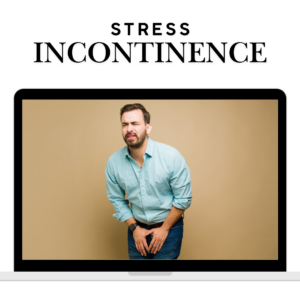 Chest physiotherapy intends to clear the bronchial mucus secretion that your baby is unable to evacuate (very common in case of bronchiolitis, cold, flu, asthma, pneumonia, Chest infection…).
Chest physiotherapy intends to clear the bronchial mucus secretion that your baby is unable to evacuate (very common in case of bronchiolitis, cold, flu, asthma, pneumonia, Chest infection…).
At the start of each session, the Baby’s physiotherapist auscultates the chest of your baby. It helps to identify and localize different elements:
- Wheezing: due to an inflammation or a bronchoconstriction of the bronchis (small muscle of the airway contract like in asthma)
- Cackles or vibrations: due to mucus
We constantly produce mucus and clear it through or digestive system thanks to the cough. However, when the production (like in infection) is too important or our cough is not efficient enough (like for babies), the mucus built up in our airway increasing risk of infection and making breathing more difficult.
The first part of the treatment consists of cleaning the upper airway. The baby’s physiotherapist clear them using physiological serum and a washing nose technique. It is often the moment use to teach or remind this techniques to the parent.
Then, the baby’s physiotherapist use manual techniques to control and increase the air volume coming in and out of the lungs of your baby. These movements will slowly bring the mucus out of the lungs to the mouth of the baby. The mucus will be either collected in a tissue or the physiotherapist will let your baby swallow it, the mucus ending in the stomach to be digested. The second possibility is actually the natural way mucus is eliminated by our body. It is the reason why you can find kind of mucus poo in your baby diaper.

These techniques are repeated several times with period of break to give time to your baby to expectorate/swallow the mucus.
There is no danger as the pressure applies on your baby chest only move their ribs in normal physiological amplitude (your baby is just breathing in and out very deeply).
In most cases, babies cry during these techniques both because the techniques are not enjoyable (water in the nose and block on their back) and because they don’t understand what happen to them. However, as soon as the techniques stops, the cry also stops.
At the end of the session, a second auscultation is performed to evaluate the progress and determine if another session is necessary. The number of session vary generally from one to 5 sessions depending on your baby state and progress.
To finish, the baby’s physiotherapist will provide specific advice to help you and your baby to manage this difficult period.
We offer home visit because we think it is more convenient for mummies and allow your baby to stay at home. But we also consult in our practice located in North London between Kentish town and Camden town.



